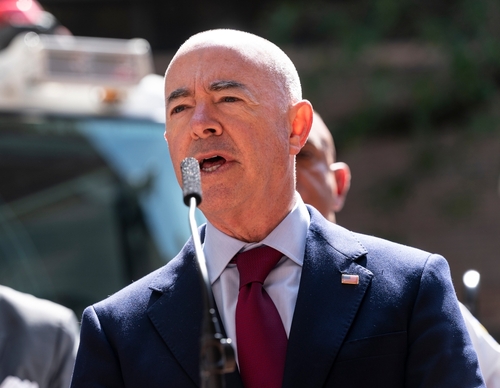
In its freshly released 2024 Homeland Threat Assessment (HTA), the U.S. Department of Homeland Security (DHS) reported that a high risk of foreign and domestic terrorism remains largely unchanged, alongside predatory economic practices and misinformation campaigns.
“Sharing information with the public on the threats we face is a vital part of protecting our homeland from today’s evolving security challenges,” Secretary of Homeland Security Alejandro Mayorkas said. “The annual Homeland Threat Assessment is a publicly available resource on the most pressing challenges facing the nation. By sharing our analysis of the threat landscape, we will enable our partners across state, local, tribal, and territorial government, along with the private and non-profit sectors, to make better-informed decisions that account for these security challenges.”
In general, the report could be broken down into four areas: terrorism, border and immigration security, foreign misinformation and economic security. Terrorism included both foreign and domestic examples, and the department noted that while the risk there is high, it’s largely unchanged from previous years – lone offenders or small group attacks remain the most consistent threat there, prone to assault with little warning. Sustained counterterrorism efforts have significantly degraded foreign terrorist organizations’ capabilities, according to the DHS, but groups like al-Qa’ida and ISIS are always looking to rebuild.
Misinformation remains a critical threat to trust in government institutions, social cohesion and democratic processes, and the department noted that it will likely remain a viable route of attack by enemy nation states, particularly thanks to cyber and AI tools. Likewise, certain nations are likely to continue using predatory economic practices, espionage and cyber attacks to target the U.S. economy, steal intellectual property and navigate advances for foreign companies.
An area that is worsening is border security. The situation there remains complex, according to the DHS assessment, and already pressing immigration challenges have been complemented by an increased flood of fentanyl and variations of its production over the last year. The results have been an increasingly lethal mix of drugs entering the country, with no sign of stopping.
Beyond this, the annual HTA release will now serve as the primary means for the DHS to share its terrorism threat level, rather than the National Terrorism Advisory System (NTAS). Instead, the latter system will be reserved for situations where the public needs to be alerted about specific or imminent terrorist threats.




